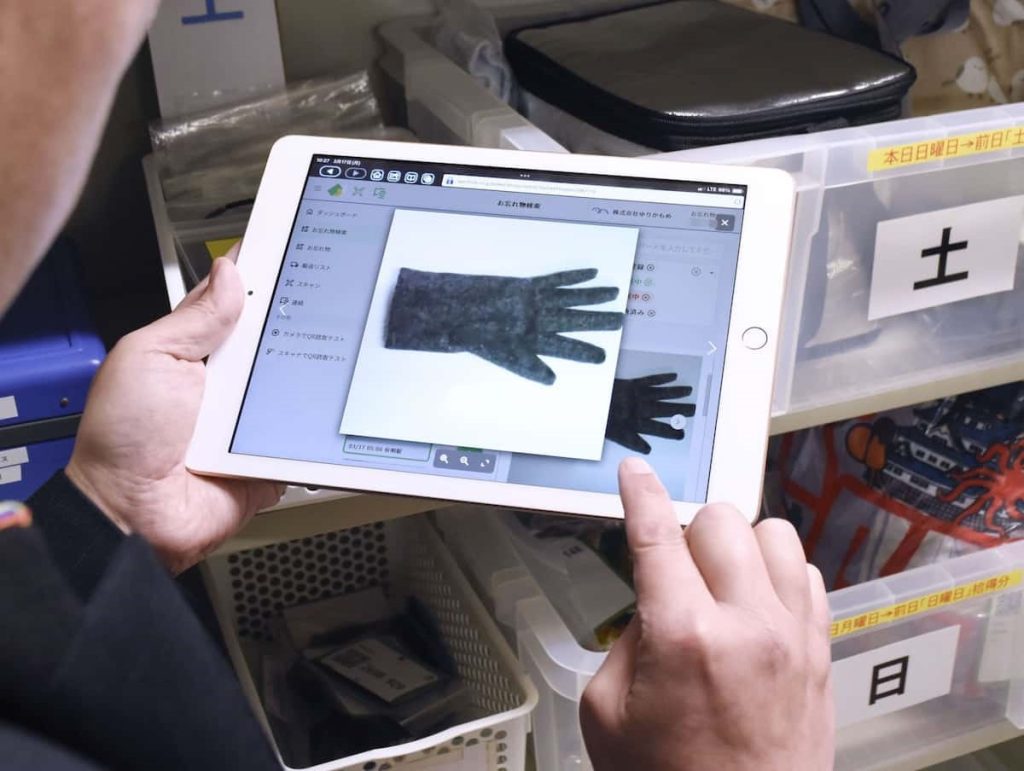
Query screen of the AI-powered lost item search service (Provided by find)
このページを 日本語 で読む
CAPTION: Query screen of the AI-powered lost item search service (Provided by FIND)
Japanese public transportation services are introducing a new system that uses artificial intelligence (AI) to search for lost items and guide users to retrieval locations. Even if people don't remember exactly where they lost an item or what it looked like, the AI can identify likely matches. At Keio Corporation in Tokyo, the return rate has jumped from under 10% to 30%.
The system also eases the burden on staff responsible for managing lost property. Currently, about 30 organizations, including the Sapporo City Transportation Bureau, Haneda Airport, the Tokyo Metropolitan Police Department (TMPD), and the Oita Prefectural Police, are using it at around 2,300 stations and facilities.
AI Extracts Features from Photos
Tokyo-based IT startup find provides the service. When a lost item is handed in, staff at transportation facilities or public institutions take a photo of it with a tablet. find's AI converts features like color and shape into text and stores them in a database along with the image.
Inquiries from those who have lost items are accepted through platforms like LINE. Users input where they think they lost the item, its features, and upload a photo if they have one. If no photo is available, they can select a similar-looking illustration. The service is also available in English, Chinese, and Korean.
Based on the user's input, find employees search the database using AI. Even without a photo or clear details, the AI suggests the most likely matches. Once the item is verified, the person receives guidance on where to pick it up.
Moving Away from Excel
The Yurikamome New Transit System in Tokyo's waterfront area introduced the service in July 2024. With about 15,000 lost items annually, Yurikamome Shimbashi Station's Chief of Transport Operations said, "Phone inquiries have decreased."
Previously, the system relied on Excel spreadsheets, which made searches time-consuming. With AI, the process has become quicker. Many users found it convenient, commenting, "Being able to use photos was a huge help," and "The service made things much easier."

The TMPD and Oita Prefectural Police are also partially using the system. A staff member from the Oita Police accounting division commented, "We no longer need to physically go to the storage warehouse to confirm items. It has sped up the return process."
Several facilities at JR Hakata Station, including its building and underground shopping areas, have also adopted the service. This eliminates the need for people to contact each facility individually for lost items around the station.
find launched the service in June 2023. As of the end of March 2025, it had handled approximately 1.5 million lost items, of which about 480,000 were successfully returned. Chief Operating Officer Ryu Wada said, "Until now, people had to make calls to various places. But as more institutions adopt this service, a vast database of lost items will make it much easier to find what's lost."
RELATED:
- AI Can Now Create Ghibli Art: A Threat to Creativity or Just the Next Step?
- SoftBank's Masayoshi Son Says Artificial Superintelligence to Exist by 2035
- EDITORIAL | Even Nobel Prize Winner Warns of AI Getting Out of Control
Author: The Sankei Shimbun
AI, lost-and-found, find, Yurikamome, Tokyo Metropolitan Police Department,
このページを 日本語 で読む








